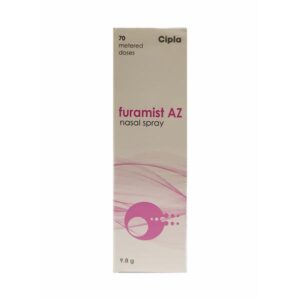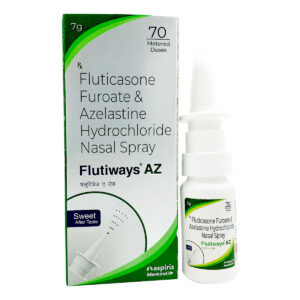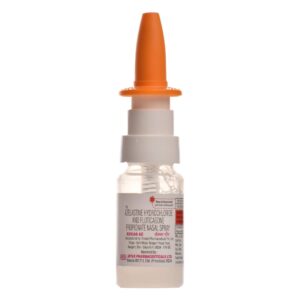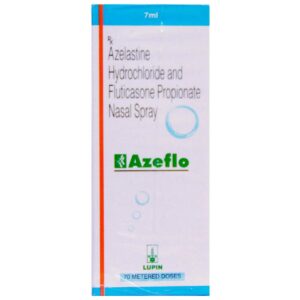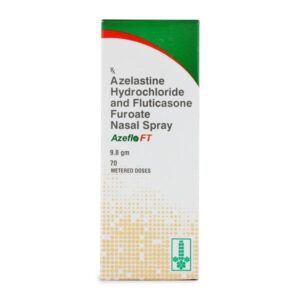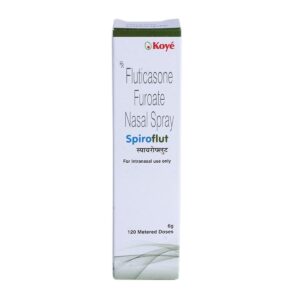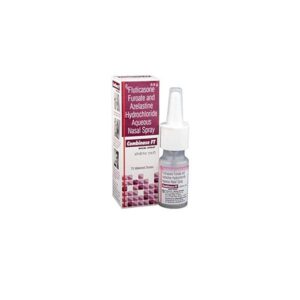AZELASTINE + FLUTICASONE
Azelastine: Azelastine is an antihistamine drug that is primarily used to treat allergic rhinitis, including both seasonal and perennial allergies. It is available in the form of a nasal spray or eye drops.
The drug works by blocking the action of histamine, a substance in the body that is responsible for allergic symptoms such as sneezing, runny nose, and itchy eyes. By inhibiting histamine release, Azelastine helps to relieve these symptoms.
The recommended dose for Azelastine nasal spray is usually 1 or 2 sprays in each nostril twice daily. However, the exact dosage may vary depending on the individual’s condition, so it is essential to follow the instructions provided by the healthcare professional or mentioned on the product label.
Common side effects of Azelastine include bitter taste, headache, drowsiness, nasal irritation, and nosebleeds. These side effects are usually mild and temporary. However, if they persist or worsen, it is advisable to consult a healthcare professional.
In rare cases, the drug may cause more severe side effects such as allergic reactions, including rash, itching, swelling, severe dizziness, and difficulty breathing. If any of these symptoms occur, immediate medical attention should be sought.
Azelastine is generally well-tolerated, but like any medication, it may not be suitable for everyone. It is essential to discuss any existing medical conditions or current medications with a healthcare professional before starting Azelastine to ensure its safe and effective use.
Fluticasone: Fluticasone is a medication that belongs to the class of drugs known as corticosteroids. It is primarily used to treat allergies, asthma, and nasal polyps.
The mechanism of action of fluticasone involves its anti-inflammatory properties. It works by reducing inflammation in the airways and nasal passages, thereby relieving symptoms such as wheezing, coughing, congestion, and nasal itching.
Fluticasone is available in various formulations, including nasal sprays, inhalers, and creams. The appropriate dose and route of administration depend on the specific condition being treated.
For asthma, fluticasone is commonly prescribed as an inhaler and the dose typically ranges from 50 to 500 micrograms, taken once or twice daily. It may be used alone or in combination with other asthma medications.
For allergic rhinitis (hay fever), fluticasone nasal spray is typically used. The recommended dose is usually 1-2 sprays into each nostril once daily.
The most common side effects of fluticasone include nasal irritation, headache, sore throat, hoarseness, and cough. In rare cases, it may lead to more serious side effects such as adrenal insufficiency, growth suppression in children, and increased risk of infections. However, these severe side effects are more likely to occur when using high doses of fluticasone for prolonged periods.
It is important to use fluticasone as prescribed by your healthcare provider and to discuss any concerns or potential side effects with them.

